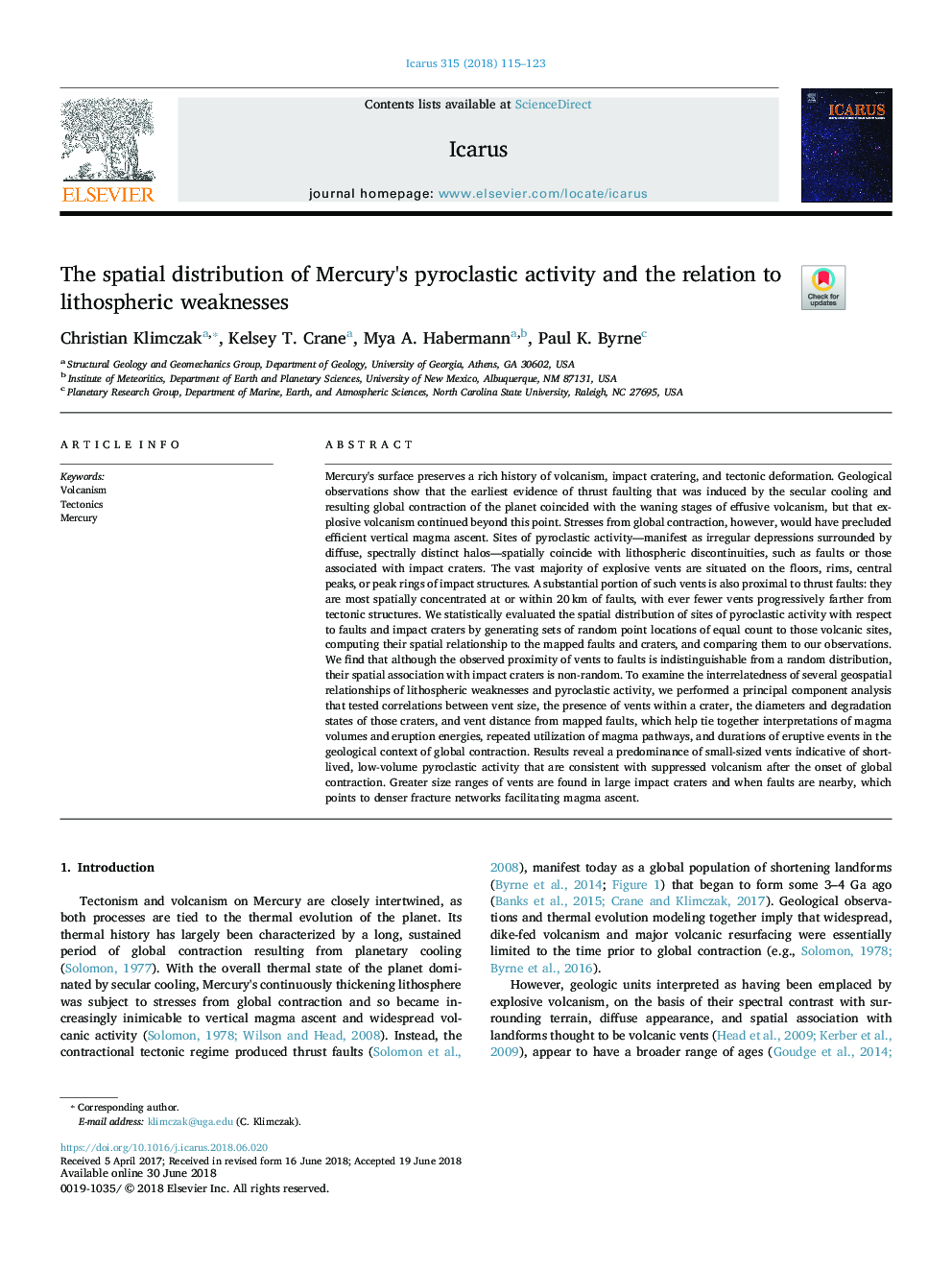| کد مقاله | کد نشریه | سال انتشار | مقاله انگلیسی | نسخه تمام متن |
|---|---|---|---|---|
| 8133744 | 1523476 | 2018 | 9 صفحه PDF | دانلود رایگان |
عنوان انگلیسی مقاله ISI
The spatial distribution of Mercury's pyroclastic activity and the relation to lithospheric weaknesses
ترجمه فارسی عنوان
توزیع فضایی فعالیت پریکلاستیکی جیوه و رابطه آن با ضعف های لیتوسفریک
دانلود مقاله + سفارش ترجمه
دانلود مقاله ISI انگلیسی
رایگان برای ایرانیان
کلمات کلیدی
آتشفشان، تکتونیک، جیوه،
موضوعات مرتبط
مهندسی و علوم پایه
علوم زمین و سیارات
علوم فضا و نجوم
چکیده انگلیسی
Mercury's surface preserves a rich history of volcanism, impact cratering, and tectonic deformation. Geological observations show that the earliest evidence of thrust faulting that was induced by the secular cooling and resulting global contraction of the planet coincided with the waning stages of effusive volcanism, but that explosive volcanism continued beyond this point. Stresses from global contraction, however, would have precluded efficient vertical magma ascent. Sites of pyroclastic activity-manifest as irregular depressions surrounded by diffuse, spectrally distinct halos-spatially coincide with lithospheric discontinuities, such as faults or those associated with impact craters. The vast majority of explosive vents are situated on the floors, rims, central peaks, or peak rings of impact structures. A substantial portion of such vents is also proximal to thrust faults: they are most spatially concentrated at or within 20â¯km of faults, with ever fewer vents progressively farther from tectonic structures. We statistically evaluated the spatial distribution of sites of pyroclastic activity with respect to faults and impact craters by generating sets of random point locations of equal count to those volcanic sites, computing their spatial relationship to the mapped faults and craters, and comparing them to our observations. We find that although the observed proximity of vents to faults is indistinguishable from a random distribution, their spatial association with impact craters is non-random. To examine the interrelatedness of several geospatial relationships of lithospheric weaknesses and pyroclastic activity, we performed a principal component analysis that tested correlations between vent size, the presence of vents within a crater, the diameters and degradation states of those craters, and vent distance from mapped faults, which help tie together interpretations of magma volumes and eruption energies, repeated utilization of magma pathways, and durations of eruptive events in the geological context of global contraction. Results reveal a predominance of small-sized vents indicative of short-lived, low-volume pyroclastic activity that are consistent with suppressed volcanism after the onset of global contraction. Greater size ranges of vents are found in large impact craters and when faults are nearby, which points to denser fracture networks facilitating magma ascent.
ناشر
Database: Elsevier - ScienceDirect (ساینس دایرکت)
Journal: Icarus - Volume 315, 15 November 2018, Pages 115-123
Journal: Icarus - Volume 315, 15 November 2018, Pages 115-123
نویسندگان
Christian Klimczak, Kelsey T. Crane, Mya A. Habermann, Paul K. Byrne,
